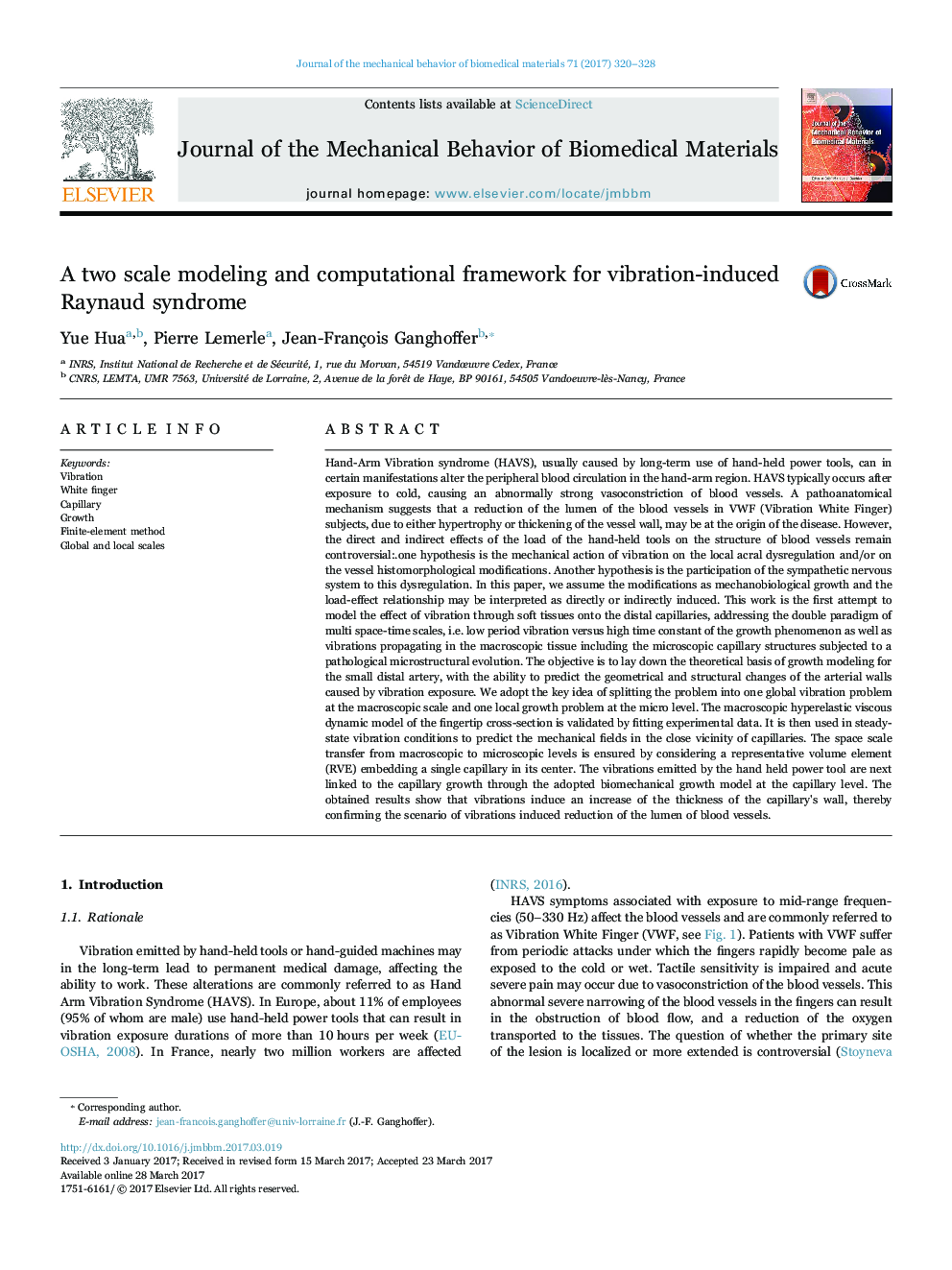| کد مقاله | کد نشریه | سال انتشار | مقاله انگلیسی | نسخه تمام متن |
|---|---|---|---|---|
| 5020597 | 1469074 | 2017 | 9 صفحه PDF | دانلود رایگان |
عنوان انگلیسی مقاله ISI
A two scale modeling and computational framework for vibration-induced Raynaud syndrome
دانلود مقاله + سفارش ترجمه
دانلود مقاله ISI انگلیسی
رایگان برای ایرانیان
موضوعات مرتبط
مهندسی و علوم پایه
سایر رشته های مهندسی
مهندسی پزشکی
پیش نمایش صفحه اول مقاله

چکیده انگلیسی
Hand-Arm Vibration syndrome (HAVS), usually caused by long-term use of hand-held power tools, can in certain manifestations alter the peripheral blood circulation in the hand-arm region. HAVS typically occurs after exposure to cold, causing an abnormally strong vasoconstriction of blood vessels. A pathoanatomical mechanism suggests that a reduction of the lumen of the blood vessels in VWF (Vibration White Finger) subjects, due to either hypertrophy or thickening of the vessel wall, may be at the origin of the disease. However, the direct and indirect effects of the load of the hand-held tools on the structure of blood vessels remain controversial:.one hypothesis is the mechanical action of vibration on the local acral dysregulation and/or on the vessel histomorphological modifications. Another hypothesis is the participation of the sympathetic nervous system to this dysregulation. In this paper, we assume the modifications as mechanobiological growth and the load-effect relationship may be interpreted as directly or indirectly induced. This work is the first attempt to model the effect of vibration through soft tissues onto the distal capillaries, addressing the double paradigm of multi space-time scales, i.e. low period vibration versus high time constant of the growth phenomenon as well as vibrations propagating in the macroscopic tissue including the microscopic capillary structures subjected to a pathological microstructural evolution. The objective is to lay down the theoretical basis of growth modeling for the small distal artery, with the ability to predict the geometrical and structural changes of the arterial walls caused by vibration exposure. We adopt the key idea of splitting the problem into one global vibration problem at the macroscopic scale and one local growth problem at the micro level. The macroscopic hyperelastic viscous dynamic model of the fingertip cross-section is validated by fitting experimental data. It is then used in steady-state vibration conditions to predict the mechanical fields in the close vicinity of capillaries. The space scale transfer from macroscopic to microscopic levels is ensured by considering a representative volume element (RVE) embedding a single capillary in its center. The vibrations emitted by the hand held power tool are next linked to the capillary growth through the adopted biomechanical growth model at the capillary level. The obtained results show that vibrations induce an increase of the thickness of the capillary's wall, thereby confirming the scenario of vibrations induced reduction of the lumen of blood vessels.
ناشر
Database: Elsevier - ScienceDirect (ساینس دایرکت)
Journal: Journal of the Mechanical Behavior of Biomedical Materials - Volume 71, July 2017, Pages 320-328
Journal: Journal of the Mechanical Behavior of Biomedical Materials - Volume 71, July 2017, Pages 320-328
نویسندگان
Yue Hua, Pierre Lemerle, Jean-François Ganghoffer,